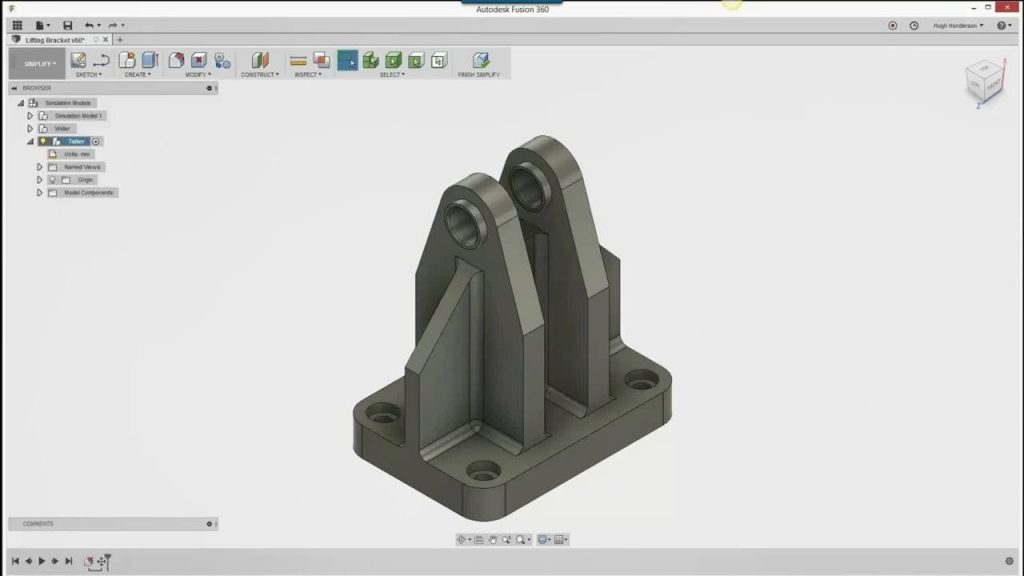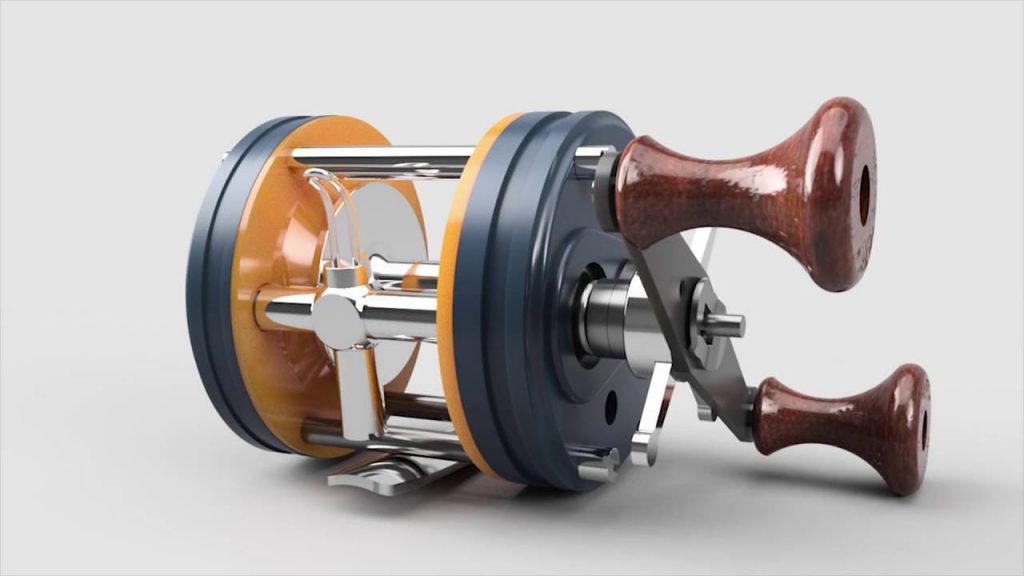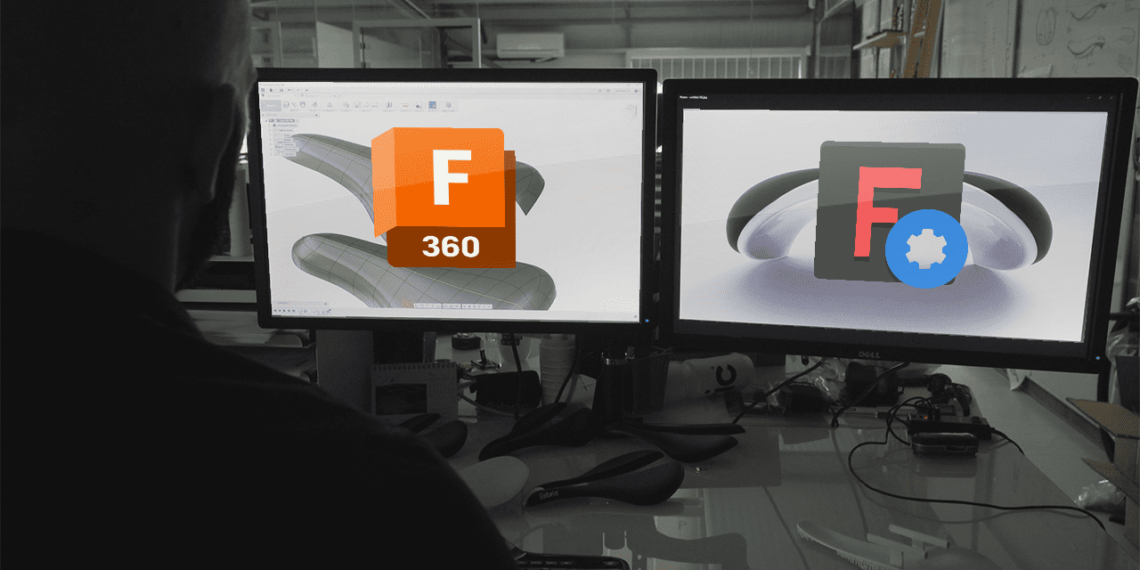The design world is getting bigger day after day. There is a wide range of 2D and 3D modeling software available, and both FreeCAD and Fusion 360 are widely recognized as great tools for creating incredibly detailed designs that help many professionals to express their ideas clearly.
These pieces of software are widely used to create different kinds of designs, such as plans, levels, details, 3D models, construction documents, etc.
In this comparison article, we will be exploring the main features of each software, and in the end, you will be able to decide which one is better. Do not miss it!
Fusion 360 vs FreeCAD: Which software should You Choose?
CAD (or computer-aided design) is a technology for design and technical documentation. It replaces manual drafting with an automated process. If you’re a designer, drafter, architect, or engineer, you’ve probably used 2D or 3D CAD programs such as AutoCAD, Fusion 360, Rhino, or FreeCAD software. We’ve already reviewed and compared some of CAD software before, such as:
- Fusion 360 vs Rhino
- Fusion 360 vs Inveentor
- SlidWorks vs FreeCAD
- ArchiCAD vs FreeCAD
- AutoCAD vs Revit
- AutoCAD vs FreeCAD
However, throughout this in-depth article, we will present you a new face-off: Fusion 360 vs FreeCAD. It is also worth to mention that these widely used programs can help you draft construction documentation, explore design ideas, visualize concepts through photorealistic renderings, and simulate how a design performs in the real world. They are used for multiple purposes like designing furniture, mechanical design, or architecture design.
Brief background

Fusion 360 is a 2D/3D CAD software developed by Autodesk that was officially launched as a commercial product in 2013. It is a combined, cloud-based 3D CAD, CAM, and CAE tool.
In one platform you can conceptualize various versions of your design, combining multiple modeling elements. A variety of analysis methods mean that you can ensure the form, fit, and function of your products. It enables the integration of design processes, from design and simulation to manufacturing.
It is a new and simplified approach to parametric modeling, which Autodesk renews with each new release. Fusion 360 meets the expectations of entrepreneurs, engineers, and designers in 3D CAD.

FreeCAD was released in October 2002 by authors Jürgen Riegel, Werner Mayer, and Yorik van Havre who wanted to create open-source CAD software to work on all platforms.
One of the key things to know about FreeCAD is that, as an open-source project, it is completely free for all to use. Because it is open-source, you can also add functions to the software using Python programming. FreeCAD is known as a parametric 3D computer-aided design (CAD).
It falls into the category of building information modeling. It allows you to easily modify your design by going back into your model history and changing its parameters.
What are Fusion 360 and FreeCAD used for?
Fusion 360 is used to create 2D and 3D designs. What sets Fusion 360 apart from other modeling software is that it allows in an environment: parametric modeling, surface modeling, and polygonal modeling.
To benefit from the possibilities offered by Fusion 360, you must not treat each modeling mode approach separately, but you need to combine the tools from the three environments to reach the best results. Many tools for manufacturing are integrated into Fusion, allowing for Planning, Generation of toolpaths, assembly management, and simulation.

FreeCAD is used to sketch geometry constrained forms and shapes to use them as a base to build other objects. You can use it for 2D drawings in order to design objects, but this is not its main focus of development.
Its major asset is the management of 3D drawings. This software contains many tools and components to adjust dimensions or extract design details from 3D models to create high-quality, production-ready drawings.
What are the modeling and designing differences between Fusion 360 and FreeCAD?

Fusion 360 offers several modeling environments for different types of modeling. The user interface of Fusion 360 is quite simple. Designers and engineers can take advantage of this CAD software to explore potential shapes for attractive and dynamic consumer products.
- The first environment of this software is parametric modeling which is based on 2d sketches, forming a closed network of curves (Profile). The relationships between sketch elements and dimensions are defined in the sketch and reflect the design intent.
- The second environment is surface modeling; it contains surface creation tools (extrusion, sweep, etc.) that allow surface creation based on sketch profiles. In this environment, a closed solid can be decomposed into its constituent surfaces.
- The third environment is polygonal modeling which allows: the creation of organic or ergonomic shapes in the software’s sculpt space, creation of a TSpline from primitives (boxes, cylinder, etc. …), creation from profiles (closed curves) by extrusion, sweeping, and the possibility of transforming a surface created from the Model environment (solid modeling) or Patch into a TSpline to edit the shape.
This means that Fusion 360 comes with many tools that should always be combined to make the process of designing products easier and give better results.

FreeCAD runs on a parametric model. It has some simple geometries (like a cone, box, cylinder…). To modify them, you have access to many tools that can be used at any time of the modeling.
It has an open-based 3D viewer, which allows the representation of graphs and also fast-rendering effects for the final drawings. If you want a special tool or need to insert a requirement or a specific order that is not available in the software, don’t worry! FreeCAD allows you to add expansion easily.
You just have to be able to create a code or a script, using specific languages like Python C++ programmed application to add forms or other functionalities that are not directly available. As a user, you can fully program it in python.
Can we create animations with Fusion 360 and FreeCAD?
Yes, you can create animations and realistic simulations with both FreeCAD and Fusion 360, but not in the same way.
Fusion 360 supports keyframe animation so you can make all kinds of animations for your assemblies, such as engines, gearboxes, and more. By using the Transform tool, you can move your components to animate them in a timeline. The organization of your components is necessary for this process, also complex animations should probably be done in another tool specifically for animation. In general, Fusion 360’s animation feature is best-suited for simple visualization.
In FreeCAD, creating animation can be more challenging, especially for beginners who have never learned programming basics or coding. There is indeed a workbench for animation, but if you learn how to code them in python directly, you will be able to achieve almost anything you want. If you are not used to coding, you can find help in forums where you can find ready python scripts.
Rendering in Fusion 360 and FreeCAD, is it possible?
The answer is YES. It is possible to render with both software to get realistic results.

In Fusion 360, there is no need for any add-in, you just have to head over to the model or patch icon and hover over it to get a flyout that lets you select render.
In the rendering workspace, you will see the background and model change a little as it is optimized for visualization. You will also notice the toolbar has tools to control materials, environment, and quality of rendering.
First, you need to apply materials to your design with the workflow; you can give specific material attributes to your model. For example, you can set your solid bodies to be made of marble, wood, various metals, glass, and more before changing the Environment Style with a choice of 8 different styles and be able to rotate the light source to control where highlights show up on your design.
Fusion 360 gives you the right to choose the type of the rendering process, it can be quick, normal, or advanced. It is recommended to use a quick render at the beginning to see how things look then make adjustments to materials and environment before you render with Advanced.
Rendering time can vary depending on assembly size, reflectivity, transparency of parts, and a few other variables.

Rendering in FreeCAD goes indirectly because this software needs a second program, such as povray and luxrender which are the only two renderers supported currently.
To be able to get a realistic render from within FreeCAD, at least one of these programs must be installed and configured on your computer. However, if no renderer is installed, you will still be able to export a project file to be rendered at another time.
Industries that use them
Fusion 360 is used in many fields and by many industries: Electronics and Electronic Components industries such as Samsung, furniture designers, and also aerospace companies.
FreeCAD is basically made for mechanic engineers to help them in their job, but it is also used in many other industries by programmers, architecture professionals, automobile engineers, and product designers.

Ease/difficulty of learning
Both of the software are quite complex with many different functions and it will take a little time to get the hang of all the things they can do.
Fusion 360 has a complete suite of 3D modeling tools, making it quite easy to create solid models. This software is also flexible and a bit easy to use with a great push/pull tool, allowing to create great organic geometry and surfaces.
FreeCAD, in particular, has been described by many users as having a “steep learning curve” but nearly all considered it a user-friendly software once they had got the hang of it. It provides many functionalities that may help its users to get a great experience; however, if you want to add a special requirement to the software you need to master python language or C++ to create the right script.
In which devices can we use Fusion 360 and FreeCAD?
We often get questions on how to choose computers as 3D artists in general, and as architects in particular. The question is asked specifically to see whether they can or cannot run these software, so we thought we would point that out in detailed articles. However, in general:
- Autodesk’s Fusion 360 is available both for Mac and Windows users.
- FreeCAD is available on Windows, Linux, and Mac.
Fusion 360 vs FreeCAD Pricing/Licensing
When it comes to Fusion 360, as a hobbyist, student, or even an entrepreneur, you could qualify for a free license. You can use Fusion 360 for free if you are a student or educator, in which case you can obtain a three-year subscription.
You can also get a free license if you are engaged in a hobby business, and your revenue does not surpass more than 100,000 USD annually or using it for your projects outside of your primary business. If you do not fit any of the cases above, you can still acquire it with an annual subscription of $495/year (or $60/month).
Check the official website for additional information.
FreeCAD can be used with its free version, but if you want to go further, you can purchase the business version, which costs $185. Every student can register to apply for a free student edition license. The license is valid for one year.
Find out more on the official website.
Which one is better?
Fusion 360 is great for mechanical or technical designs, but its ability to sculpt artistic 3d models is very restricted. It is a complete business software rather than a piece of artisan software. One of Fusion 360’s drawbacks is that it has free licenses only for educators and students.
FreeCAD’s open-source parametric nature makes it a great choice. This CAD software gives you the most popular 3D modeling tools such as Booleans, extrude, etc. As it is open-source, it will always be completely free. Unlike Fusion 360, this software is still in development. FreeCAD is free to extend whereas Fusion 360’s extensions and plugins are of an additional cost.
Conclusion
As you can see both FreeCAD and Fusion 360 are powerful CAD software recommended by many professionals, but with some differences between them. Before purchasing one of them, you need to self-analyze the various options available in both software. Find out your business needs, budget, and skill levels, which play an important role in deciding which software is better for you.































FreeCAD can be used with its free version, but if you want to go further, you can purchase the business version, which costs $185. Every student can register to apply for a free student edition license. The license is valid for one year.
that seems to be wrong.. there’s no business version of freecad